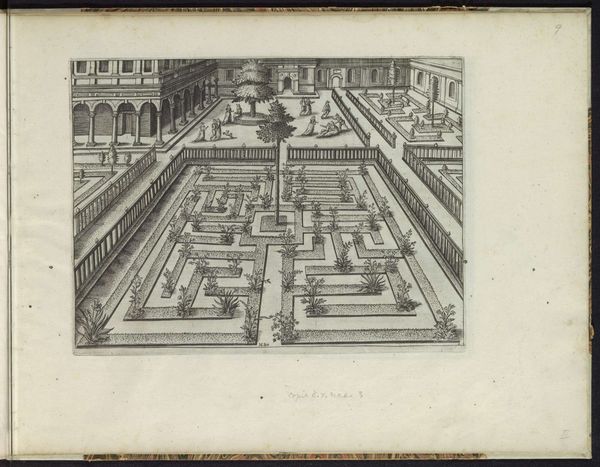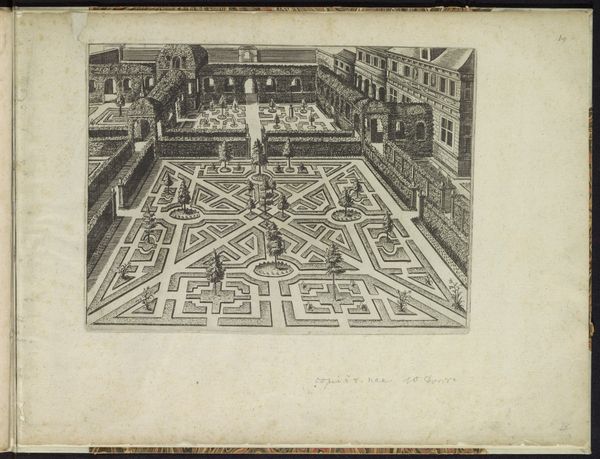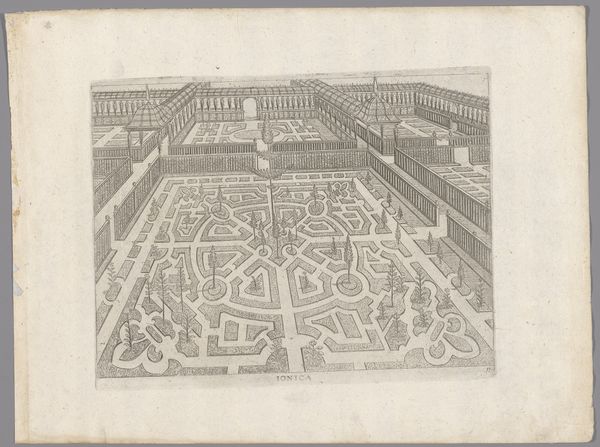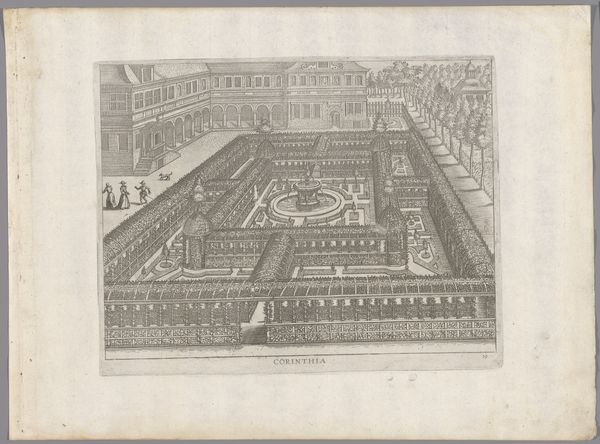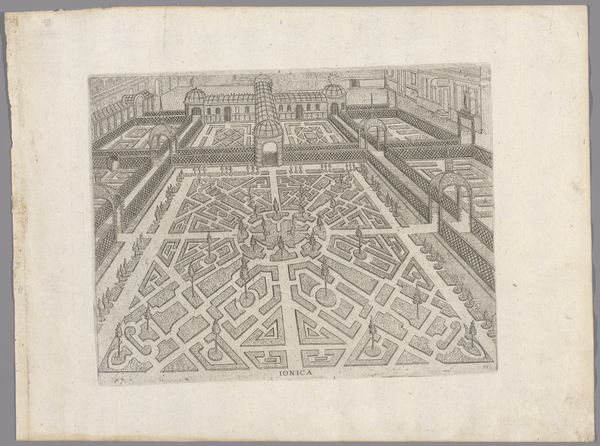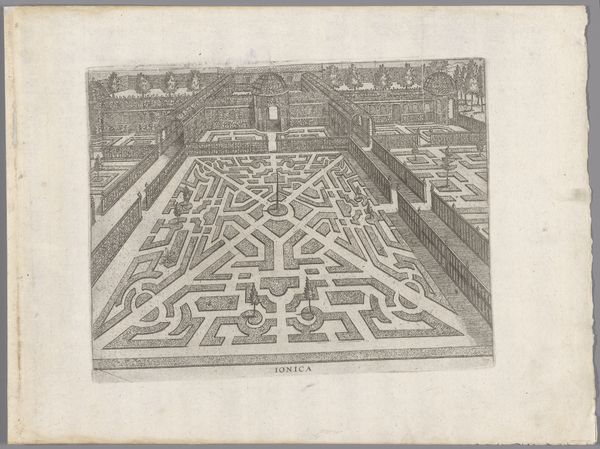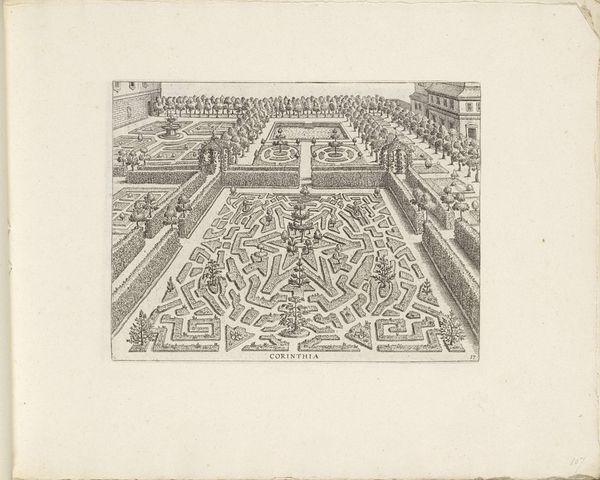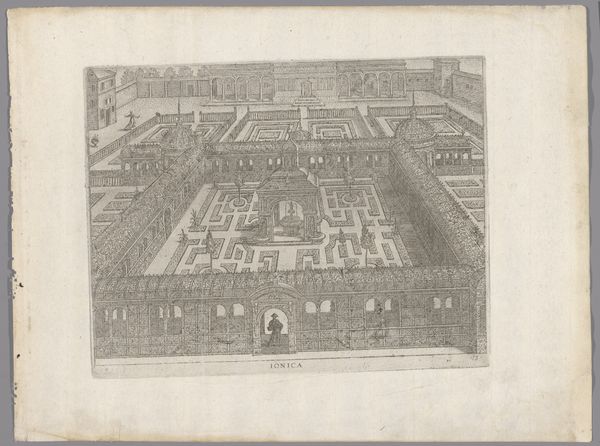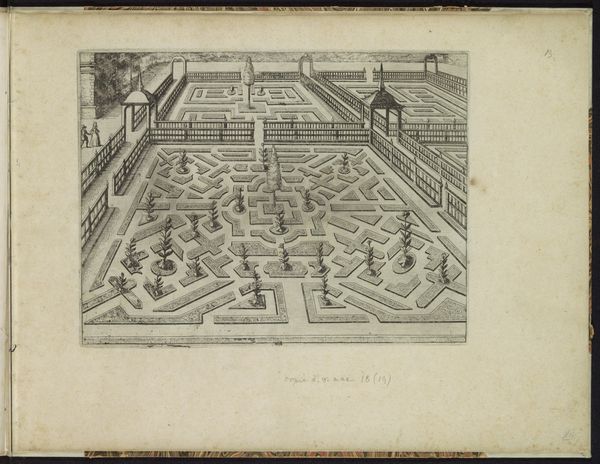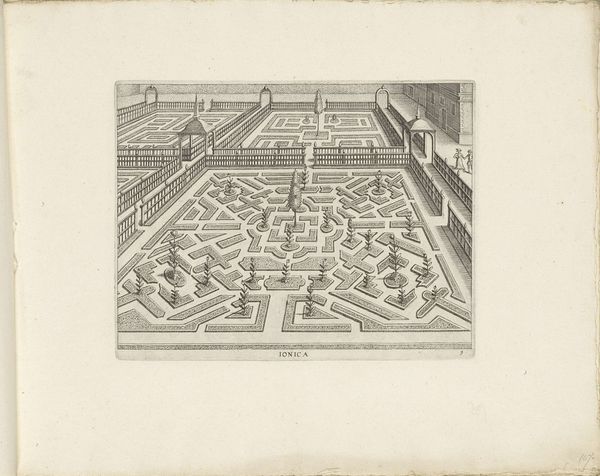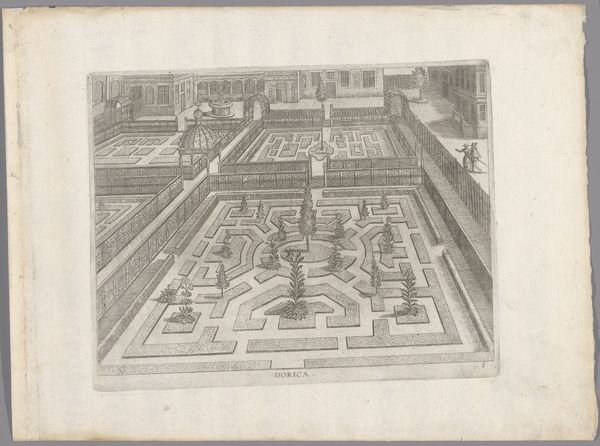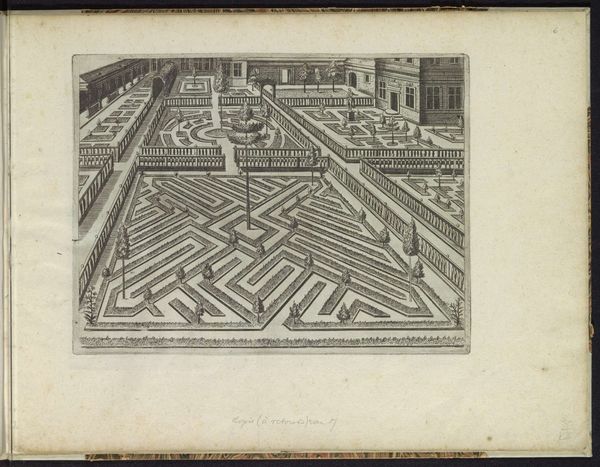
Tuin met een parterre met in het centrum een stervormig compartiment 1615
0:00
0:00
drawing, ink, engraving
#
drawing
#
baroque
#
landscape
#
ink
#
geometric
#
northern-renaissance
#
engraving
Dimensions: height 187 mm, width 251 mm
Copyright: Rijks Museum: Open Domain
This anonymous print depicts a garden with a parterre, made at an unknown date, but held today in the Rijksmuseum. The garden, viewed from a high vantage point, presents a rigidly ordered space, characteristic of European gardens from the 16th century onwards. These gardens, often attached to palaces or stately homes, were more than just decorative. They visually asserted control over nature, mirroring the social hierarchy and the power structures of the time. In the Netherlands, the elaborate design of parterres – the meticulously arranged, level spaces in a garden – became symbols of wealth and status. During the Dutch Golden Age, these gardens provided spaces for social display, and even political negotiation. To understand this image better, we might consult historical garden plans, estate records, or even conduct soil analyses to see how these spaces were used and maintained. In doing so, we reveal the social and institutional meanings embedded in this seemingly simple garden design.
Comments
No comments
Be the first to comment and join the conversation on the ultimate creative platform.
